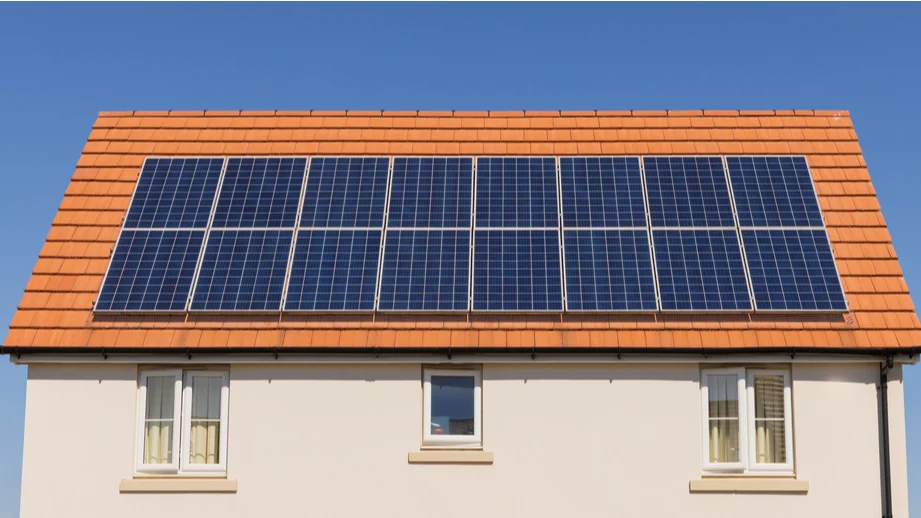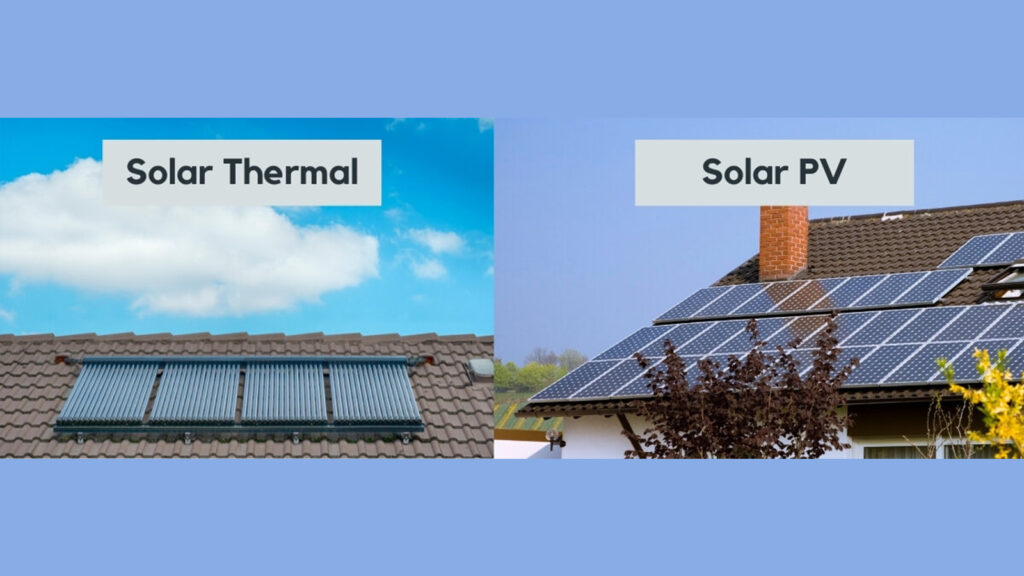
Solar panels are devices that convert sunlight into electricity by harnessing the photovoltaic effect. The photovoltaic effect is a phenomenon where certain materials generate an electric current when exposed to light. Solar panels, also known as photovoltaic (PV) panels, are made up of numerous solar cells that work together to capture and convert sunlight into usable electrical energy.
Each solar cell is typically composed of semiconductor materials, such as silicon. When sunlight hits these materials, it excites the electrons, causing them to move and create an electric current. This generated electrical energy can then be used to power various electrical devices or be stored for later use.
The basic building block of a solar panel is the solar cell, and these cells are interconnected and encapsulated within a protective layer to form a solar module or panel. Solar panels come in various shapes and sizes, and they can be installed on rooftops, integrated into building materials, or deployed as part of large solar farms.
There are two main types of solar panels commonly used today: monocrystalline and polycrystalline. Monocrystalline panels are made from single-crystal silicon, offering higher efficiency and a sleek black appearance. Polycrystalline panels, on the other hand, are made from multiple silicon crystals, and while they are generally less efficient than monocrystalline panels, they are often more cost-effective.
The use of solar panels has become increasingly popular as a renewable energy source due to their environmental benefits and the potential for reducing dependence on fossil fuels. Solar energy is abundant, clean, and sustainable, making it an attractive option for addressing the growing global demand for electricity while minimizing environmental impact.
In addition to their use in residential and commercial settings, solar panels play a crucial role in decentralized energy production. They contribute to off-grid solutions, providing electricity to remote areas where traditional power infrastructure may be impractical or unavailable.
As technology continues to advance, researchers are exploring new materials and design concepts to enhance the efficiency and affordability of solar panels. Innovations such as thin-film solar cells, tandem solar cells, and solar tracking systems are being developed to improve energy conversion rates and make solar power even more accessible.
In summary, solar panels are vital components of the renewable energy landscape, capturing sunlight and converting it into electricity to power homes, businesses, and various applications. Their role in the transition to cleaner and more sustainable energy sources is paramount, contributing to a more environmentally friendly and resilient energy future.
Solar Thermal or Solar PV: Which Is Better?

The choice between solar thermal and solar photovoltaic (PV) technologies depends on specific application requirements, energy needs, and the geographic location of the installation. Both technologies harness solar energy but do so in different ways, each with its own set of advantages and limitations.
- Solar Photovoltaic (PV):
- How it works: Solar PV panels convert sunlight directly into electricity through the photovoltaic effect. These panels are made up of semiconductor materials, typically silicon, which generate an electric current when exposed to sunlight.
- Advantages:
- Versatility: Solar PV systems can be easily integrated into various settings, including residential rooftops, commercial buildings, and solar farms.
- Lower maintenance: PV systems generally have fewer moving parts, reducing the need for frequent maintenance.
- Silent operation: PV systems operate silently, making them suitable for urban and residential areas.
- Limitations:
- Efficiency: While PV technology has seen significant improvements, the efficiency of converting sunlight into electricity is still lower compared to solar thermal systems in certain applications.
- Energy storage: Solar PV systems often require additional energy storage solutions, such as batteries, to provide a consistent power supply when sunlight is unavailable.
- Solar Thermal:
- How it works: Solar thermal systems use sunlight to generate heat, typically through mirrors or lenses that focus sunlight onto a receiver. The heat can then be used for various purposes, including generating electricity through steam turbines or providing hot water for residential and industrial use.
- Advantages:
- Higher efficiency in certain applications: Solar thermal systems can achieve higher efficiency in converting sunlight into usable energy, especially in large-scale power plants.
- Energy storage: Some solar thermal systems can store heat for extended periods, allowing for continuous energy generation even when the sun is not shining.
- Heat applications: Solar thermal is well-suited for applications such as water heating, space heating, and industrial processes that require high-temperature heat.
- Limitations:
- Limited versatility: Solar thermal systems are often more complex and specific to certain applications, limiting their versatility compared to solar PV.
- Maintenance: Some solar thermal systems may have more components and moving parts, leading to potential maintenance challenges.
Choosing Between Solar Thermal and Solar PV:
- Scale and Purpose: For small-scale, decentralized applications like residential rooftop installations, solar PV is often more practical. For large-scale power generation, especially in areas with high direct sunlight, solar thermal may be more efficient.
- Location: The geographic location and climate play a significant role. In regions with abundant sunlight, both technologies can be viable, but the specific conditions may favor one over the other.
- Energy Storage: If continuous energy generation without sunlight is crucial, solar thermal systems with efficient energy storage capabilities might be more suitable.
In conclusion, the choice between solar thermal and solar PV depends on the specific requirements of the project, with factors such as scale, location, and energy needs influencing the decision. Both technologies contribute to the goal of harnessing solar energy for a sustainable and cleaner future, albeit in different ways.
How much can I save by installing solar panels
The savings you can achieve with solar panels in Ireland depend on various factors, including the size of your solar installation, your energy consumption, local solar conditions, and the cost of electricity in your area. Here are some key factors to consider when estimating potential savings:
- System Size:
- The size of your solar panel system is a crucial factor. Larger systems generally produce more electricity and can lead to higher savings. The capacity of a solar panel system is measured in kilowatts (kW) or megawatts (MW).
- Energy Consumption:
- Your current energy consumption is another important consideration. If your solar panel system can generate a significant portion or all of the electricity you use, you can maximize your savings.
- Solar Conditions:
- Ireland’s climate features variable sunlight throughout the year. The amount of sunlight your location receives will affect the efficiency of your solar panels. While Ireland may not have the sunniest climate, modern solar panels are designed to generate power even in diffuse sunlight.
- Electricity Prices:
- The current cost of electricity in your area influences your potential savings. If electricity prices are high, the value of the electricity generated by your solar panels increases, leading to greater potential savings.
- Government Incentives:
- Check for available government incentives, rebates, or feed-in tariffs for solar energy in Ireland. These programs can significantly impact the financial viability of your solar panel installation.
- Financing and Upfront Costs:
- Consider the upfront costs of purchasing and installing the solar panels. Many homeowners choose to finance solar installations through loans or other financing options, and the terms of these arrangements can affect your overall savings.
- Maintenance Costs:
- Solar panels generally have low maintenance costs, but it’s essential to factor in any maintenance expenses over the system’s lifespan.
To estimate potential savings, you can use online solar calculators or consult with a solar energy professional. These tools consider your location, roof orientation, shading, and other variables to provide a more accurate estimate of the energy your system can generate and the potential financial savings over time.
Keep in mind that while the initial investment in solar panels can be significant, many homeowners find that the long-term savings, along with environmental benefits, make solar energy an attractive and sustainable choice. It’s advisable to get quotes from reputable solar installers and explore available financing options to determine the best approach for your specific situation.
How much do solar panels cost in Ireland 2024?
The cost of solar panels in Ireland can vary based on several factors, including the size of the system, the quality of the solar panels, installation costs, and any additional components such as inverters and mounting equipment. Additionally, market conditions and government incentives can influence the overall cost. As of my last knowledge update in January 2022, I don’t have specific price data for solar panels in Ireland. Therefore, it’s essential to check with local solar providers or obtain quotes for the most accurate and up-to-date information.
However, I can provide some general information:
- Cost per Watt: Solar panel prices are often discussed in terms of cost per watt. As of the last update, the cost per watt for solar panels in many markets ranged from €1 to €2.50. This cost includes the panels themselves and basic installation.
- Average System Size: A typical residential solar panel system in Ireland might have a capacity of 2 kW to 5 kW. Larger systems are common for homes with higher energy consumption or those looking to generate surplus energy.
- Total System Cost: Based on the cost per watt and the system size, you can estimate the total cost of the solar panel system. Keep in mind that additional costs for inverters, mounting hardware, wiring, and installation labor will contribute to the total expenses.
- Government Incentives: Check for any government incentives, grants, or rebates that may be available for installing solar panels in Ireland. These incentives can significantly reduce the overall cost of the system.
- Installation Costs: The cost of installation can vary depending on factors such as roof complexity, accessibility, and local labor rates. It’s crucial to get quotes from reputable solar installers to understand the total project cost.
To get the most accurate and current information, consider reaching out to local solar installers or requesting quotes online. They can assess your specific needs, evaluate your property for solar potential, and provide detailed cost estimates based on your location and energy requirements. Additionally, check for any changes in government policies or incentives that may impact the cost-effectiveness of solar panel installations in Ireland.